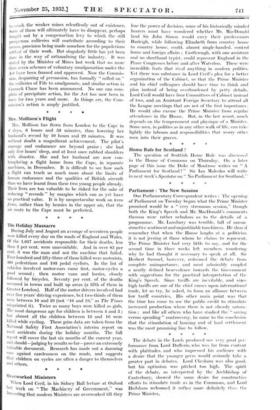Redundant Mines Definite action by the Coal Mines Reorganization Commission
has cut unceremoniously across a considerable mass of public discussion about the working of the Act of 1980. It may be admitted that the limitation laid on production works temporarily to the detriment of the more efficient mines, but the plain fact stares all mines, efficient and inefficient, in the face that their capacity is some 820 million tons a year and the effective, demand at the present time some 220 million. It would, no doubt, be easy in the fierce competition for a shrunken market to crush the weaker mines relentlessly out of existence. Sonic of them will ultimately have to disappear, perhaps bought out by a compensation levy to which the still prosperous collieries will contribute according to their means, provision being made somehow for the populations robbed of their work. But singularly little has yet been clone in the .way of rationalising the industry. It was stated by the Minister of Mines last week that no more than seven schemes of voluntary amalgamation under the Act have been framed and approved. Now the Commis- sion, despairing of persuasion, has formally "called on " the collieries of Fife to amalgamate, and similar action in Cannock Chase has been announced. No one can com- plain of precipitate action, for the Act has now been in force for two years and more. As things are, the Com- mission's action is amply justified.







































 Previous page
Previous page